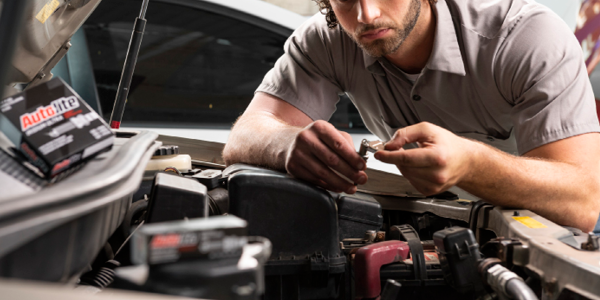(SPONSORED CONTENT)
The pros and cons of three different ignition technologies
Since the advent of the automobile, parts design and technology have consistently evolved. One of the constants that all automotive combustion engines have in common, however, is the need for the right ignition system. Let’s look at the key features of three common ignition systems, and the advantages and disadvantages of each.
High Energy (Electronic) Ignition System
General Motors introduced high energy ignition (HEI) in 1974, where it became the standard for GM vehicle engines until the mid-1980s.
HEI systems have three main components: the ignition module, a magnetic pick-up coil and a high-tension coil. HEI systems use a transistor switch within the ignition module to generate high-voltage current from the ignition coil. This transistor gives HEI its primary advantage because it generates a consistent, high voltage spark throughout the life of the engine. This allowed drivers to experience fewer misfires and longer spark plug life.
Non-mechanical transistors also eliminate breaker point wear, but one key disadvantage here is that the conventional distributor cap and rotor will eventually need replacing. Additionally, the ignition timing cannot be controlled with as much precision as more sophisticated systems can.
Distributor-less “Wasted Spark” Ignition System
Distributor-less Wasted Spark ignition came about in 1988 to improve on the HEI system by eliminating the distributor cap and rotor entirely.
Wasted Spark utilizes multiple ignition coils – one for each pair of cylinders. The coils fire two spark plugs simultaneously: one on the compression stroke and one on the exhaust stroke. The exhaust stroke spark – aptly called a “waste spark” – has no real effect.
A distributor-less ignition system (DIS) has several advantages. First, it includes fewer moving parts and more precise control of spark timing, which reduces heat and can improve engine efficiency, emissions and overall performance. Unfortunately, if any ignition system problems arise, the lack of moving parts can make it more difficult to properly diagnose. These systems also require advanced spark plugs due to the additional wear caused by reverse firing.
Coil-on-Plug (Direct) Ignition System
The coil-on-plug (COP) system became popular in the late 1990s and is considered the most sophisticated ignition system.
With a COP system, the ignition coil connects directly to each spark plug, which provides several benefits. Because each plug has its own dedicated coil, the system creates hotter, high-voltage sparks without the need for high-voltage spark plug wires. This lowers resistance and prevents misfires. In addition, various sensors provide input to the engine control unit (ECU) to precisely control ignition timing for proper firing and lower emissions.
There are some disadvantages to COP as well.
Because of their advanced design, COP systems are typically more expensive to buy and repair. Another cost-related factor for these systems are the spark plugs themselves. Due to high heat and voltage, advanced spark plugs like platinum or iridium are required, and only iridium plugs are recommended for replacement because of their durability. Another potential disadvantage to consider is, like Waste Spark systems, a lack of moving parts which can make troubleshooting more challenging.
Having a good grasp of the capabilities and shortcomings of each ignition system type is helpful when recommending the right spark plug for the vehicle you’re working on.
Autolite® has been focused on developing spark plugs for over 85 years. We have done the research and put in the hours to enhance the performance, durability and ignitability of plugs for domestic and import engines. Autolite® offers warranties on all spark plug products to ensure quality and reliability.
Explore the benefits of our most advanced products at autolite.com.


0 Comments